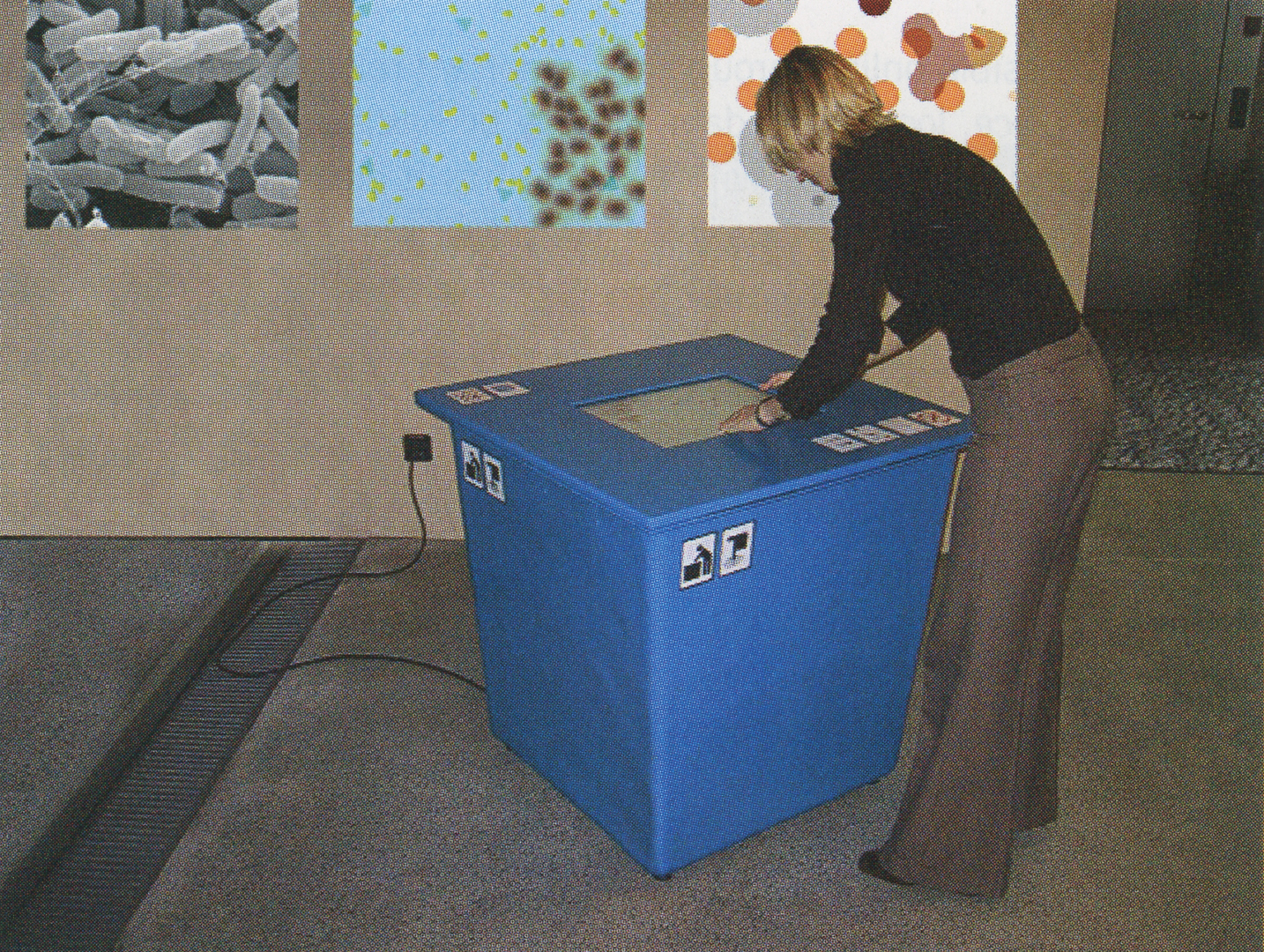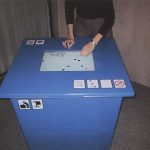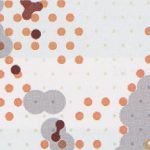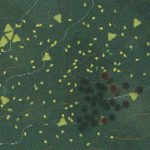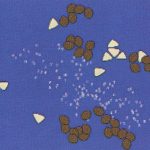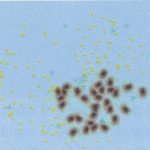Eric Zimmerman, Ranjit Bhatnagar, Frank Lantz, Peter Lee, Michael Sweet: FLUID
Artist(s):
Title:
- FLUID
Exhibition:
Creation Year:
- 2002
Medium:
- Interactive Installation
Category:
Keywords:
Artist Statement:
Housed in a blue plastic industrial waste container, FLUID is a multi-level touchscreen installation, an ecosystem as play, a system designed for meaningful interaction. The touchscreen is parallel to the floor, and players interact with the system by touching, stroking, and poking at the screen. This core activity is the sensual substratum with which the user explores relationships among the elements of the system.
Within the ecosystem of the screen live a number of simple organisms, each species relating to the user and to each other in unique ways. Some of the organisms need to be guided by the user in order to move about the environment. Others have their own means of locomotion. Some of the elements can be combined with others to form new organisms. And some of the organisms have the ability to transform elements of the ecosystem.
The elements of the ecosystem include:
• Algae, the grid of dots that form the substratum of the system.
• Feeders, organisms that have to be assembled by players and that in adult form turn algae into edible food.
• Foragers, hungry creatures that move toward and eat edible food.
• Muck, the gray substance that first appears and spreads slowly about the screen when a player touches a forager.
FLUID is a system, abstracted to a simple, stylized language. The graphics resemble geometric design patterns of the 1950s. The rich audio mixes natural sounds with procedurally generated electronic static. Playing with FLUID means exploring the relationships between the organisms. In a sense, the structure of the ecosystem, the interactions between the organisms, is itself the content. The immediate sensuality of the experience, combined with the dynamic quality of the evolving ecosystem, provides a curiously structural set of pleasures. The toy-like interaction rewards deeper and deeper exploration, as players continue to uncover the relationships between the organisms. For example, to rid the ecosystem of muck, the player has to lead the foragers around the screen by strategically moving the feeders over algae, creating a trail of “bread crumbs” that indirectly maneuver the foragers toward the muck. In order to accomplish this goal, the player has to understand the properties of all of the elements in the system: the algae, feeders, foragers, and muck.
There is also within FLUID a kind of moral fable. Interacting with one of the organisms in the ecosystem releases an unpleasant gray “muck” that slowly spreads across the entire screen if the player does not discover a way to stop it. If FLUID is a game, then the goal of the game is to eliminate the muck from the screen. Yet paradoxically, the muck is only present because of the user’s own seduction to interact with the system.
FLUID was commissioned from gameLab by the Swiss Re Center for Global Dialogue.
Technical Information:
Inside the plastic industrial waste container is a high-end Windows PC. Speakers and a subwoofer are also inside the container. The LCD touchscreen measures 20 inches diagonally. It is set flush inside the lid of the waste container. The FLUID software is a Director 8 Projector file.
Process Information:
As with all gameLab projects, FLUID evolved through a highly iterative process. Our design and development methodology has a strong emphasis on prototyping and play testing, in which we develop a playable version of a project as early as possible and then base our design decisions on our actual experience of interacting with the prototype.
gameLab was initially approached by the Swiss Re Center for Global Dialogue to create a game experience on the theme of water and sustainability. FLUID began life as a short written treatment, which was quickly turned into a rough, skeletal prototype. The visuals evolved as we altered, redefined, and tweaked the player interactivity and the relationships among the elements of the system.
While our initial impulse was to create a graphically rich 3D experience, the game visuals became simpler and simpler as we proceeded. Since we were aiming for a gallery context, the moment-to-moment interactivity had to be self-explanatory and immediately gratifying. At the same time, it was important that players be able to discern the actual relationships among the ecosystem elements. The final version of FLUID has a balance of ambiguity and clarity. It is a puzzlingly abstract system that rewards exploration and experimentation.
Affiliation Where Artwork Was Created:
- gameLab
Other Information:
Images:
2-5: FLUID screenshots

